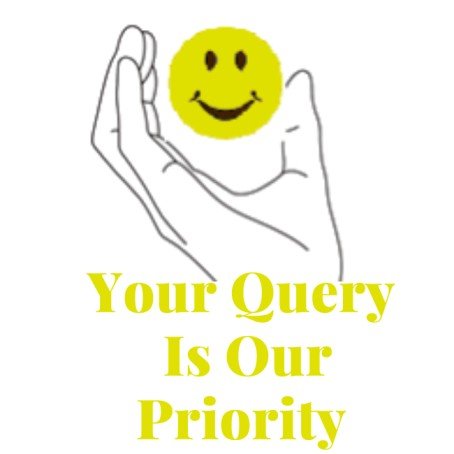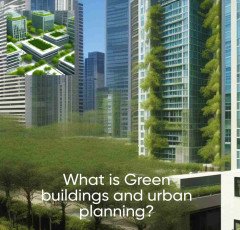
What are Green buildings and urban planning ?

Urban planning and green building are connected ideas that entail designing ecologically responsible and sustainable towns and communities.
Green structures are made to have as little negative environmental impact as possible, to increase energy efficiency, and to cut down on waste and pollution. They are built with environmentally friendly materials, using renewable energy sources, and with cutting-edge technology to cut down on energy use and greenhouse gas emissions.
The process of developing and controlling the physical layout of cities and towns is referred to as urban planning, on the other hand. Sustainable urban planning entails developing livable, walkable, and connected communities that promote a high quality of life for locals while reducing adverse effects on the environment.
In order to lessen our carbon footprint and lessen the effects of climate change, green buildings and sustainable urban design are crucial.
By lowering air pollution, encouraging physical exercise, and building more resilient communities that can better weather natural catastrophes and other environmental problems, they can also enhance public health.
Due to their shared emphasis on fostering more environmentally friendly and sustainable societies, green buildings and sustainable urban planning are closely related. Sustainable urban planning often incorporates tactics that promote the construction of green buildings in order to do this, such as encouraging the use of renewable energy sources and green infrastructure.
The popularity of green buildings is rising as more people realize the value of sustainable living. The following are some characteristics of green buildings:
Energy-efficient design:
Green buildings are built to use as little energy as possible and require less artificial lighting and cooling. To reduce energy waste, they might use elements like insulation, passive heating and cooling, and natural lighting.
Sustainable materials:
Materials that are recyclable or biodegradable and have a low environmental impact are used to develop green buildings.
Water conservation:
Eco-friendly structures may include water-saving elements like low-flow toilets and faucets as well as rainwater collection and reuse systems.
Renewable energy:
To lessen dependency on non-renewable energy sources, green buildings may use renewable energy sources like solar or wind power.
Additionally, supporting public transportation, developing walkable communities, and building green areas like parks and community gardens are all examples of sustainable urban planning techniques. We can contribute to reducing our impact on the environment and building communities that are more ecologically friendly and sustainable.
Green construction and environmentally conscious urban design also offer financial advantages in minimizing our environmental effect.
In addition to lowering energy and water expenditures, green buildings may eventually boost a property's value. By encouraging the growth of environmentally friendly enterprises like renewable energy and green infrastructure, sustainable urban planning can also generate economic opportunities.
Green construction and sustainable urban design have the potential to enhance public health, which is a significant advantage. These measures can assist to enhance respiratory health and lower rates of chronic diseases like obesity and diabetes by lowering air pollution and encouraging physical activity through walkable communities and bike-friendly infrastructure.
Around the world, there are several instances of effective green construction and sustainable urban design projects.
As an illustration, the city of Copenhagen in Denmark has established a vast network of bike routes and bike share programs, which have assisted in easing traffic congestion and enhancing air quality. With projects like green roofs and walls, rainwater harvesting systems, and an extensive public transit system, Singapore is a world pioneer in sustainable urban development.
The promotion of sustainable living and the development of more livable communities rely heavily on green buildings and sustainable urban design.
We can build a brighter future for ourselves and future generations by lowering our impact on the environment, fostering economic opportunity, and enhancing public health.
Governments and organizations have created a variety of standards and certifications to encourage the implementation of environmentally friendly techniques in order to promote green buildings and sustainable urban planning. A well-known benchmark for green buildings is the Leadership in Energy and Environmental Design (LEED) certification program, which rates structures on factors like energy effectiveness, water conservation, and the use of sustainable materials.
In addition to certificates, there are other incentives and initiatives available to promote the construction of sustainable neighborhoods and structures. Governments might provide tax breaks, grants, and subsidies to people and enterprises who make investments in sustainable practices. Initiatives for sustainable development may also receive funding and resources from for-profit organizations and private businesses.
Green building and sustainable urban design are difficult to achieve.
For instance, employing sustainable practices can be more expensive than using conventional building techniques, which may deter some developers from pursuing green building initiatives. Furthermore, it's possible that existing structures and urban infrastructure were not planned for sustainable practices, which increases the difficulty and cost of retrofitting.
In general, supporting sustainable living and reducing the effects of climate change require green buildings and sustainable urban planning. We can construct a more sustainable future for ourselves and future generations by integrating environmentally friendly practices into the design and management of buildings and communities.
The requirement for widespread adoption and buy-in from stakeholders, including developers, government officials, and the general public, is another obstacle to the implementation of green buildings and sustainable urban design. Initiatives for sustainable development demand a mental adjustment and a readiness to give long-term advantages a higher priority than immediate costs.
Initiatives for sustainable development may receive more support if education and awareness-raising activities are made.
Public campaigns and community outreach initiatives, for instance, can assist inform the public about the advantages of green construction and sustainable urban design, and motivate individuals to adopt more environmentally friendly behaviors.
Collaboration among stakeholders is a key element in achieving sustainable development.
To build more sustainable communities, governments, corporations, and community organizations can collaborate to share resources, know-how, and expertise. Partnerships between public and private organizations as well as cooperation between various sectors and industries may be involved in this.
In order to ensure that sustainable development projects remain effective and pertinent throughout time, it is crucial to continuously analyze and change them. This could entail tracking and evaluating the effects of green construction and urban planning projects, and then making changes in response to stakeholder feedback and data analysis.
In conclusion, supporting sustainable living and reducing the effects of climate change require green buildings and sustainable urban design. Although putting sustainable development goals into action presents problems, there are also numerous chances for cooperation and creativity. We can build more livable communities and a more sustainable future for ourselves and future generations by banding together to emphasize sustainable activities.
To note that sustainable development projects are crucial for achieving social and economic fairness in addition to addressing environmental challenges. By facilitating easier access to cheap housing, green areas, and transportation, sustainable urban planning can aid in the creation of more equal communities. Green structures can lower energy expenditures for low-income households and enhance occupant health and wellbeing.
Initiatives for sustainable development may also lead to job opportunities and economic expansion.
Sustainable practices can be developed and put into use to expand markets for environmentally friendly goods and services as well as to create jobs in sectors like renewable energy and environmentally friendly infrastructure.
Sustainable development projects are more crucial than ever as the world gets more urbanized.
Cities have the potential to be centers of innovation and sustainability, but they also contribute significantly to global greenhouse gas emissions. Cities can become leaders in the battle against climate change and establish more livable communities for everyone by placing a high priority on green buildings and sustainable urban design.
In conclusion, green construction and environmentally conscious urban design are essential elements of sustainable growth that can be advantageous to the environment, the economy, and society. We can build a more fair and sustainable future for ourselves and future generations by cooperating to prioritize sustainability.
The idea of the "circular economy" is one of the fundamental tenets of sustainable development.
By keeping materials in use for as long as feasible, the circular economy aims to reduce waste and encourage the efficient use of resources.
Through the use of sustainable building methods and materials, such as recycled or reused materials and the utilization of renewable energy sources, the circular economy can be applied to the setting of green buildings. This can encourage more sustainable building techniques and lessen the negative environmental effects of the construction industry.
Additionally, through activities like recycling programs, composting, and waste reduction methods, sustainable urban planning can also embrace the ideas of the circular economy. Cities may lessen their environmental impact and build more sustainable societies by boosting resource efficiency and decreasing waste.
The promotion of social and environmental justice is a crucial component of sustainable development.
Initiatives for sustainable development should promote equitable access to opportunities and resources, as well as deal with concerns of social inequality and environmental deterioration.
This may entail giving low-income and marginalized populations a higher priority when developing sustainable infrastructure and housing in the context of green buildings and sustainable urban planning. To make sure that local communities' wants and concerns are taken into account during the planning and development process, it could also entail interacting with them.
Environmentally, socially, and economically sustainable growth can be facilitated by green buildings and sustainable urban planning. We can develop more equitable communities by adopting the concepts of the circular economy and advocating for social and environmental justice.
The requirement for ongoing innovation and research is another critical component of sustainable growth.
To solve complex environmental and social problems, sustainable development needs fresh perspectives.
Innovation may involve creating new technologies or materials that are more environmentally friendly or energy-efficient in the context of green structures and sustainable urban design. It can also entail looking into fresh ideas for urban architecture and planning, such using green walls and roofs to boost biodiversity and enhance air quality.
Research is essential for developing initiatives for sustainable development in addition to innovation.
Informing policy choices on green buildings and sustainable urban planning, research can assist identify optimal practices. It can also assist in locating new sustainability prospects, such as the creation of fresh renewable energy sources or the application of smart technology to increase energy effectiveness.
To guarantee that programs for sustainable development are inclusive and sensitive to the needs and viewpoints of all stakeholders.
To accomplish this, it is necessary to interact with a wide range of stakeholders, including enterprises, government agencies, and community organizations, in order to comprehend their needs and concerns and incorporate them into planning and decision-making processes.
Critical elements of sustainable development that can advance the sustainability of the environment, society, and economy include green buildings and sustainable urban design. We can build more equitable and sustainable communities for all through integrating innovation and research, as well as encouraging inclusivity and responsiveness.


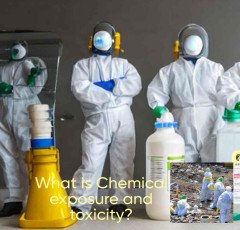

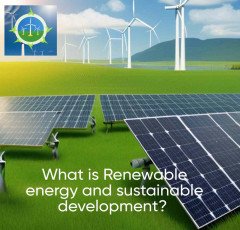
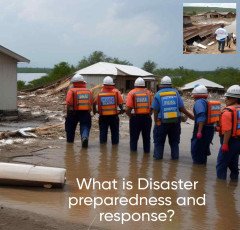

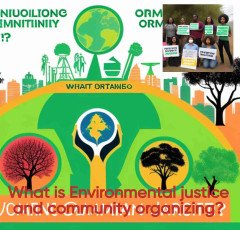
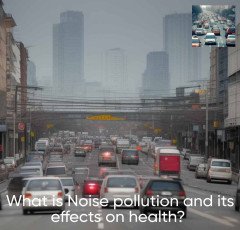

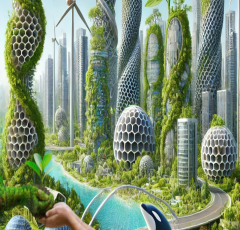
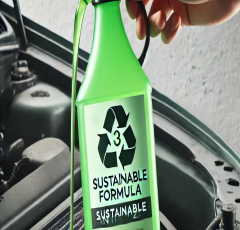






 Creative Brief For Video Shoot
Creative Brief For Video Shoot  NordVPN
NordVPN  Unlimited access to classes on illustration, photography, design, film, music
Unlimited access to classes on illustration, photography, design, film, music  Air Purifier for Home
Air Purifier for Home  Amazon Best Selling Products
Amazon Best Selling Products  Kitchen Daily Use
Kitchen Daily Use  Sennheiser
Sennheiser  Bathroom Mirrors
Bathroom Mirrors  Online Technology Classes
Online Technology Classes  Best Sellers On Amazon
Best Sellers On Amazon  Hello Theme
Hello Theme  1150+Trendy kids coloring pages Bundle
1150+Trendy kids coloring pages Bundle  ELECTRONIC ACCESSORIES
ELECTRONIC ACCESSORIES  Digital Voice Recorder
Digital Voice Recorder  Online Marketing
Online Marketing  Kitchen Tap
Kitchen Tap  The Secret Email System
The Secret Email System  Wireless Bluetooth Earphones
Wireless Bluetooth Earphones  Stylish Sneakers by Red Tape
Stylish Sneakers by Red Tape  NordPass
NordPass  Apple iPhone
Apple iPhone  NordLocker
NordLocker  Door Handle Collection
Door Handle Collection  Smart Watches
Smart Watches  Echo Dot - Smart speaker with Alexa
Echo Dot - Smart speaker with Alexa  RPM 3.0
RPM 3.0  Realme Smart Phone
Realme Smart Phone  Only For The United States
Only For The United States  Wall Lamp
Wall Lamp  Wireless Gaming Mouse
Wireless Gaming Mouse  Hot Bags For Pain Relief
Hot Bags For Pain Relief  4k Projector For Home
4k Projector For Home  Puma (Clothing & Accessories)
Puma (Clothing & Accessories)  Essentials for Gamers
Essentials for Gamers  SOFAS
SOFAS  Smart Doorbell
Smart Doorbell  Acer Laptop
Acer Laptop  HP Laptop
HP Laptop  One World Collection
One World Collection  Duke T Shirts
Duke T Shirts  Women Fashion
Women Fashion  ASPINAL LONDON
ASPINAL LONDON  Favorite Company (Cuelinks)
Favorite Company (Cuelinks)  Prime Video
Prime Video  Graphics & Design
Graphics & Design 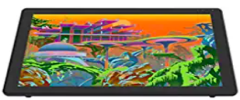 LCD Writing Tablet
LCD Writing Tablet  Adidas Shoes
Adidas Shoes  Best Robotic Vacuum Cleaners
Best Robotic Vacuum Cleaners  Unreal Engine 5 For Beginners Learn The Basics Of Virtual Production
Unreal Engine 5 For Beginners Learn The Basics Of Virtual Production  iPhone cable
iPhone cable  Dell Laptop
Dell Laptop  Pet Care Products
Pet Care Products  SEO Checklist
SEO Checklist  Crocs
Crocs  Men Clothing
Men Clothing  Samsung Mobile
Samsung Mobile  Wristbands
Wristbands  Best Home Appliances
Best Home Appliances  All Wireless Products
All Wireless Products  The Click Engine
The Click Engine  Best Phone
Best Phone  Dual USB Car Charger
Dual USB Car Charger  Best Selling Books
Best Selling Books  Home Decor Items
Home Decor Items  BEST SELLER TOP10
BEST SELLER TOP10  Motion Sensor Light
Motion Sensor Light  TitTok Revolution
TitTok Revolution  Healthy Ingredients
Healthy Ingredients  Top Rated From Amazon
Top Rated From Amazon  ASUS Laptop
ASUS Laptop  Artificial Intelligence
Artificial Intelligence  Hanging Lights For Living Room
Hanging Lights For Living Room  Rakhi
Rakhi 


















